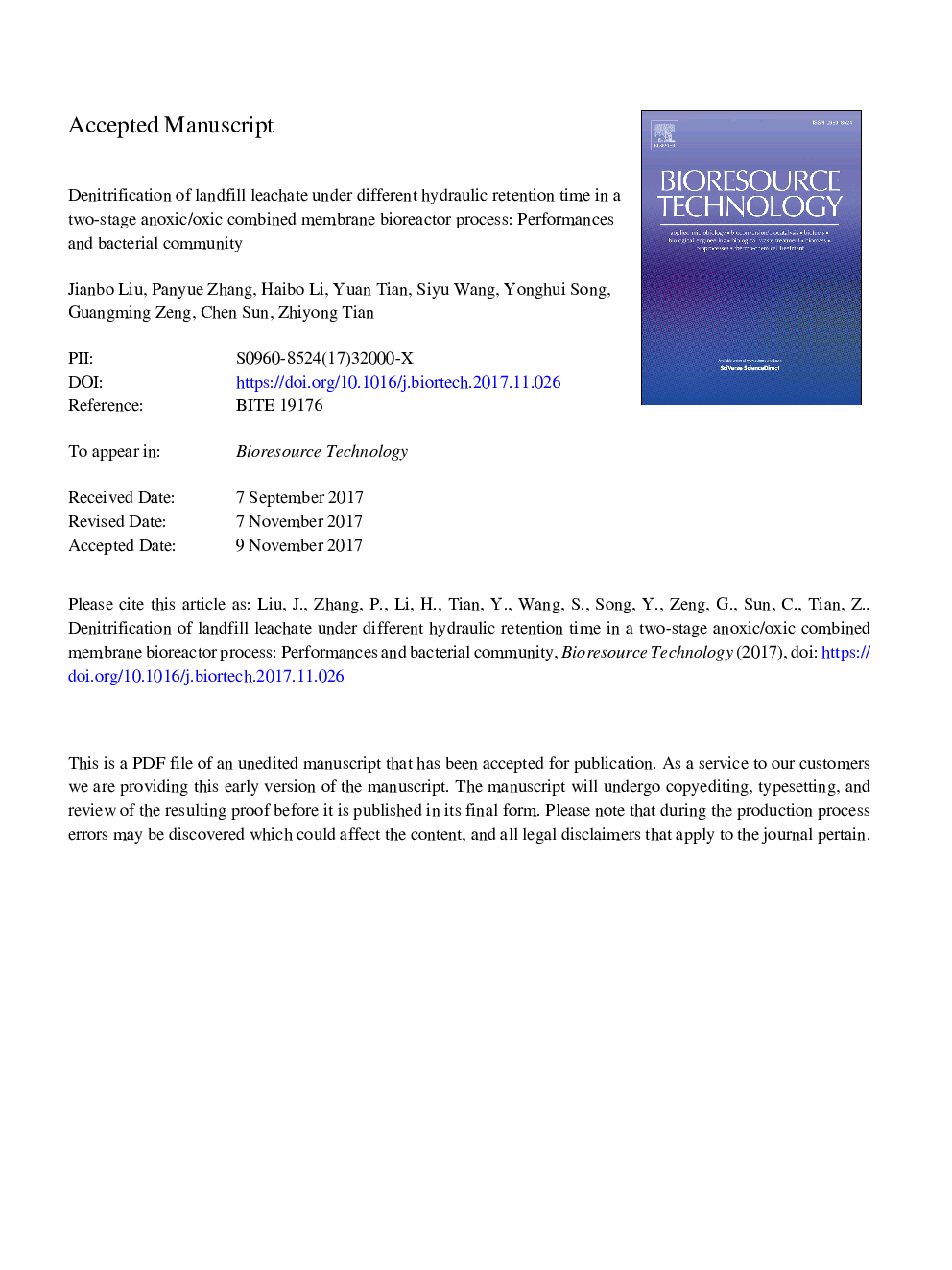| Article ID | Journal | Published Year | Pages | File Type |
|---|---|---|---|---|
| 7068695 | Bioresource Technology | 2018 | 36 Pages |
Abstract
Two-stage anoxic/oxic combined membrane bioreactor (A/O-A/O-MBR) process was used to treat leachate generated from Shenyang Laohuchong landfill, and the effect of hydraulic retention time (HRT) was studied. A long HRT of 9â¯d and a short HRT of 5â¯d showed negative effect on the stability of process, resulting in a higher organic concentration of effluent than that with a HRT of 7â¯d, while the highest removal of chemical oxygen demand (COD), ammonia (NH4+-N) and total nitrogen (TN) were achieved with a HRT of 7â¯d, which was 82.4%, 99.1% and 75.3% respectively. The analysis of microbial communities by high-throughput sequencing showed that phyla Proteobacteria and Bacteroidetes were the dominant bacteria, which accounted for 36.63-42.39%, 29.21-38.66%, respectively. For genus classification, the most representative of Ferruginibacter, unclassified-Saprospiraceae and Nitrosomonas accounted for 20.76-35.11% totally. The other communities, including Nitrobacter, Planctomyces, Rhodobacteraceae and Nitrospirae, were also developed for organic degradation and denitrification.
Related Topics
Physical Sciences and Engineering
Chemical Engineering
Process Chemistry and Technology
Authors
Jianbo Liu, Panyue Zhang, Haibo Li, Yuan Tian, Siyu Wang, Yonghui Song, Guangming Zeng, Chen Sun, Zhiyong Tian,
